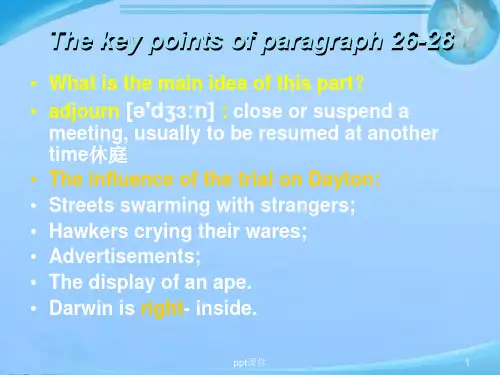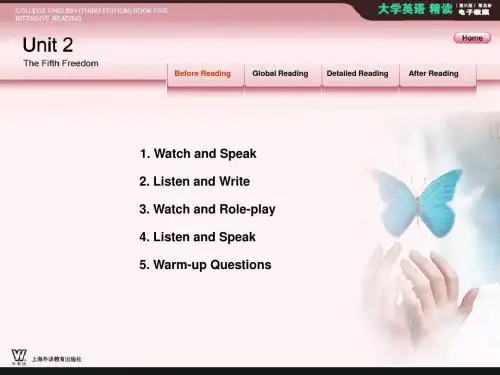3. What’s the chief topic of the text?
4. According to the text, what solutions does the writer put forward to our ecological problems?
5. What do you think about the relationship between man and nature?
Part 3 (para. 17-26): the solution to environmental
destructions--- reinventing and healing the relationship between
civilization and the earth
.
22
Detailed Study of the Text
IV. Important words
Lap, divert, Antarctic, parka , glacier, inexorable, graph, rendezvous, hover, hummock, collide , scenario, billow, slash, noctilucent, shimmer, translucent, methane, biomass, rip, spectral, skirmish, ultraviolet, equilibrium, axiom, depletion, deforestation, sober, deploy, leapfrog, at stake
Unit Three Ships in the Desert
.
Book 1I
I. Teaching Objectives





![最新[英语学习]高级英语教学讲义ppt课件](https://uimg.taocdn.com/7ed1ce96b307e87100f696c6.webp)



![[英语学习]高级英语PPT课件](https://uimg.taocdn.com/95687d5a84868762caaed5e1.webp)
